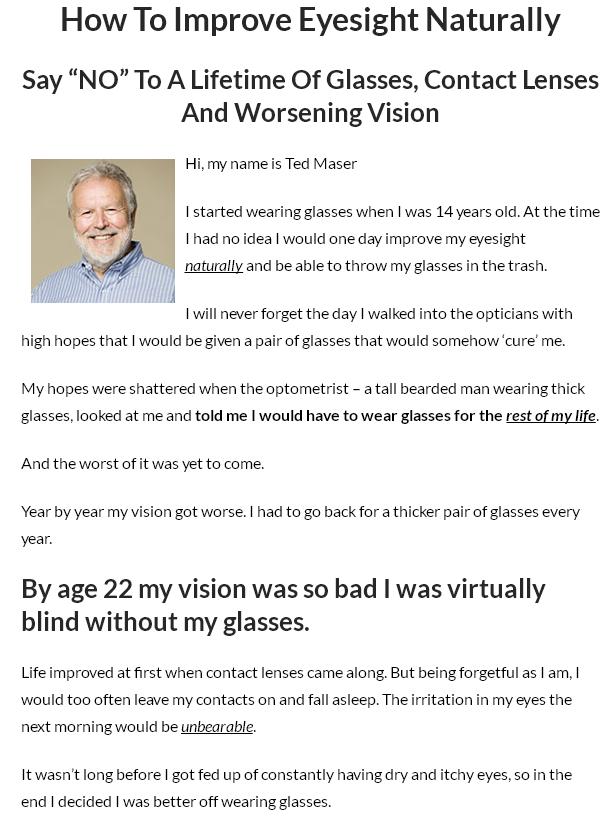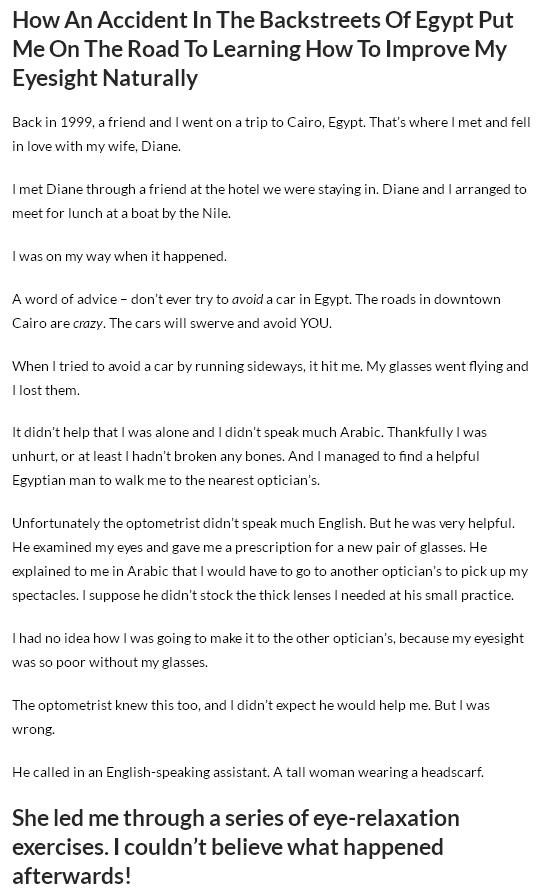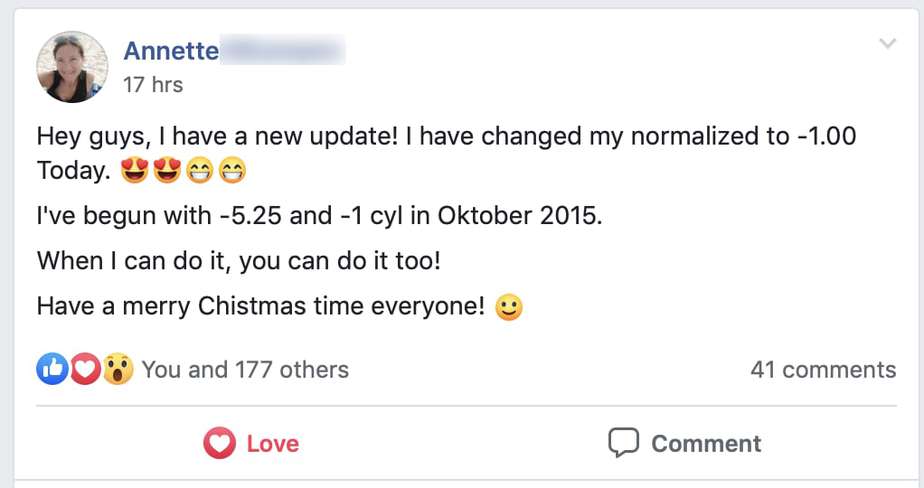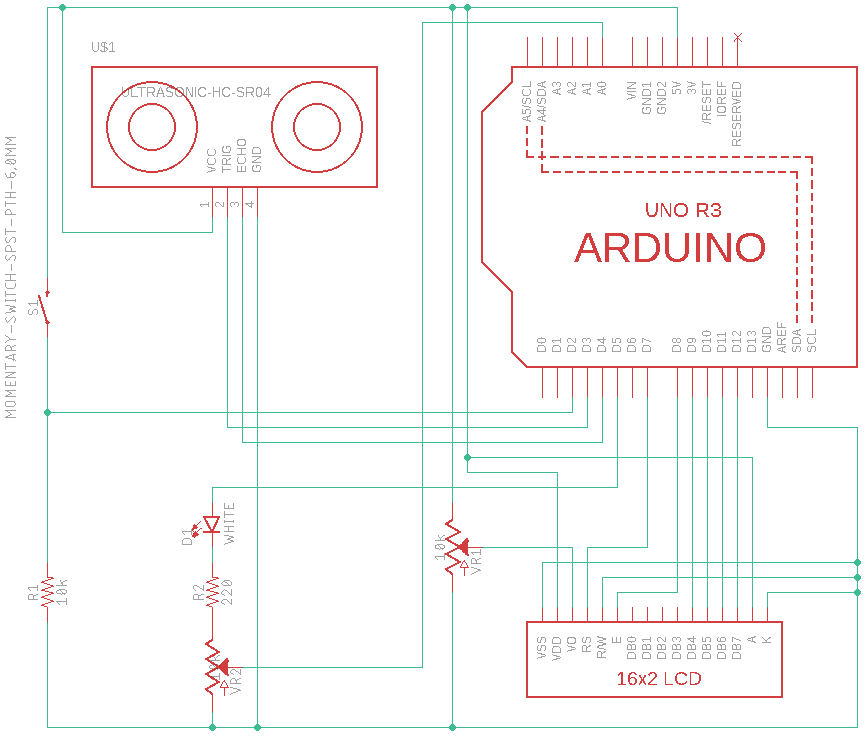** This, a verbatim repost of Michael’s great why vision is worse at night post over in the community forum. **
We’ve all experienced it. On a bright summer day, we see (almost) perfectly with our normalized glasses, but when autumn comes and the days become dark and dreary and night time, our vision becomes significantly worse. The same is true for badly lit indoor spaces. So, what’s going on? As myopes when we say we see worse we usually mean that we perceive more blur on distant objects. So how can this be explained in the aforementioned conditions.
Vision At Night: Less Light
First let’s look at the most obvious aspect: less light. What does this mean for our vision? Less light means that the photo receptors in our retina are struck less frequently by photons. We therefore perceive an image that is darker, has less contrast and less color. This (especially the lower contrast) means the brain has less information to make sense of the image and to clear things up. But less light by itself does not lead to blur. Our eyes have a mechanism to adjust to various lighting conditions however, which brings us to the next point.
The Pupil At Night

The main reason why we perceive more blur under darker conditions is simply the dilation of our pupils! Anyone with some knowledge of photography knows that a large aperture will cause the background of a photograph to become blurry. That’s exactly what a decent camera (not a smartphone) does when you select its portrait mode; it selects the largest possible aperture. The landscape mode does the exact opposite, by making the aperture as small as possible, which results in the entire picture looking sharp and in focus.
To illustrate this effect, I’ve taken these 3 pictures. You can easily reproduce this for yourself if you have a decent camera that lets you manually select the aperture and the focus. First, I’ve printed out a couple of A4 Snellen eye charts (to be used at 3 meters). Then, I’ve positioned them a 0.5, 1.0, 2.0, 4.0 and 6.0 meters from the camera. I’ve zoomed out sufficiently to see (pats of) all eye charts (focal length 35 mm, our eyes are closer to 70 mm BTW). I’ve set the camera to manual focus at 2.0 meters. This corresponds to someone wearing normalized glasses that are 0.5 diopter weaker than their full correction, so the farthest point that they can theoretically see clearly is at 2.0 meters. Finally, I selected the “A” mode for manual selection of the aperture; this means the camera automatically adjusts the shutter speed. Then I’ve taken 3 pictures with 3 different apertures:

_DSC01121920×1275 263 KB
Small aperture (f/20)
This is how we may perceive the world on a bright sunny day when under corrected by 0.5 diopter. Our pupils are contracted to a very small size. As a result, almost everything appears to be in focus, even though we should theoretically only see clearly up to 2.0 meters. The small aperture leads to very large range of clarity, that extends far beyond the focal point which I set at 2.0 meters. Note that even the “D” on the yellow sign (near the top left corner) which is more than 100 meters distant, appears almost sharp.

_DSC01111920×1275 260 KB
Intermediate aperture (f/10)
When there’s less light available, because it’s cloudy outside or it’s beginning to get dark, our pupils dilate. Because this happens automatically in response to the lower light level, we’re usually not even aware that this is happening. But the range of clarity will have decreased noticeably. Note that the “D” on the far yellow sign now looks quite blurry. The license plates on the cars are no longer readable. The trees no longer look as crisp as before, and the eye chart at 6.0 meters begins to show a little blur. This still appears quite acceptable, when we realize we should only be able to see clearly up to 2 meters. And by using active focus we may be able to clear up the license plates.

_DSC01101920×1275 217 KB
Biggest aperture (f/4.5)
On a dark and gloomy day, our pupils will dilate even more. The same thing happens indoors, especially in badly lit spaces. Our pupils are now so big that the range of clarity has shrunken to a very shallow area around the focal point of 2.0 meters. This is when we truly experience the concept of the diopter bubble. Sure, we’re able to clear up the blur on the chart at 4 meters using active focus, but the one at 6 meters will be more challenging. But the license plates…? Forget it! And the big “D” on the far sign? Eehhhh… what sign?  There’s a sign there…?!?! Seriously…???
There’s a sign there…?!?! Seriously…???  Remember these photographs were all taken on a sunny day, so there’s still good contrast in this picture. But on a very cloudy day there’s very little of that.
Remember these photographs were all taken on a sunny day, so there’s still good contrast in this picture. But on a very cloudy day there’s very little of that.
So, we can conclude that a small aperture (or pupil) results in larger range of clarity, which can extend far beyond the focal point (2.0 meters in this case), whereas a larger aperture (or pupil) results in a smaller range of clarity (very close to the focal point). In photography this is referred to as depth of field. This illustration neatly sums it up:

what-is-aperture-in-photography1000×2000 182 KB
Note that the depth of field also increases at the near point when the size of the aperture decreases. This effect however is not as clearly apparent with our eyes, since accommodation automatically kicks in when we focus our attention on a nearer object (like having auto focus enabled on the camera).
But our eyes are not cameras… When using a camera, you have two basic methods for adjusting to low light conditions (not counting ISO), you can either select a bigger aperture, or choose a longer exposure time (or shutter speed). Our eyes on the other hand don’t have a shutter. Therefore, the only way our eyes can adjust to low light is to increase the aperture by dilating the pupil, which will decrease the depth of field. So, to sum it all up:
Bright sunny day → small pupil → deep depth of field → even objects quite far outside our diopter bubble appear clear
Dark & gloomy day (or indoors) → large, dilated pupil → shallow depth of field → only objects within our diopter bubble appear clear
Implications Of Night Time On Eyesight
Now, this has very interesting implications for the testing of our vision. If we want to measure our eyesight to quantify how far we can see clearly, we ought to do this not in bright light, but in dim light! We want the pupil to be dilated as much as possible , for the shallowest possible depth of field. That way the edge of our diopter bubble will be most clearly defined. In bright light however, even objects far outside our diopter bubble will appear to be clear. So, measuring in bright light is an easy way to fool ourselves regarding our progress… When I realized this, I finally understood why opticians tend to do their measurements in a dark room. They do this because it will yield the most accurate results. Saying that we were over prescribed by the optician, just because they measured our eyesight in a dark room, therefore is not correct! Doing it that way actually ensures the best possible measurement, and the result should accurately reflect our true diopter needs for seeing clearly at all (far) distances. But because of the much deeper depth of field in bright daylight, we might feel we don’t need that much correction most of the time. And that’s true, we can usually do quite well with a 0.5 diopter less correction. But we will notice more blur under less ideal lighting conditions. In fact, as long as we notice this effect, we know we are still myopic and under corrected. Because any object that is truly in focus at a given distance, will remain in focus even if the depth of field becomes extremely shallow (the chart at 2.0 meters is sharp in all 3 photos). So, until we can see the stars in the night sky clearly without any glasses, we’re still myopic….
Spherical Aberration Increase For Night Time Vision

image1000×506 55.8 KB
The lens in our eyes is not necessarily shaped perfectly. Often the light rays that pass near the edge of a lens do not come into focus at the same point as the light rays that pass through the central region of the lens. So, in low light conditions, when the pupil is dilated and light passes through a larger area of the lens (closer to the edge), spherical aberration would introduce an additional amount of blur, making our vision even worse.
The following video nicely demonstartes both spherical and chromatic aberration:
Chromatic Aberration Making Night Time Vision Worse

Light of different wavelengths is refracted at slightly different angles. Light with short wavelengths (violet & blue) is refracted more than light with a long wavelength (orange & red). So light with shorter wavelengths will come into focus closer to the lens than light with longer wavelengths. (The effect is however greatly exaggerated in the picture above.)
This means whenever the light is predominantly red/orange (sunrise, sunset) the vision of a myopic person will be better, because a large portion of the light will then focus on (or close to) the retina. The opposite is true when blue is the predominant color, because in that case a large portion of the light will focus in front of the retina.
Of course the spectrum of the light outdoors constantly changes both during the day and due to weather conditions:

image1920×573 70 KB
Natural sunlight changing throughout the day

2880px-Spectrum_of_Sunlight_en1920×1017 150 KB
The spectrum of natural daylight in relation to cloud coverage
Intuitively one would think that on cloudy days blue is the dominant color. According to this graph however that is not the case. In fact, this graph suggest that blue light is dominant when the weather is nice and there’s lots of blue sky (which also makes sense when you think about it). So this effect could actually worsen our vision on a bright sunny day! But I think the positive effect of the deeper depth of field in those circumstances outweighs this negative effect.
Quality of light
I also believe that indoors the quality of the light also plays an important role. By this I mean the available light spectrum. Our eyes have evolved to see in natural full spectrum sunlight. But most artificial light sources (especially fluorescent lights or LED lights) don’t provide the full spectrum:

image579×934 97 KB
When some wavelengths are missing (or only present in relatively small amounts) this will of course lead to a different color perception. But what’s more, I think it might also have an influence on our pupil size. Our pupils may contract more in response to certain wavelengths than they do in response to others… So, when these wavelengths are absent (or only present in relatively small amounts) they might be more dilated. This could explain why we see so much more blur in artificially lit spaces, even when the amount of light (the brightness) may seem sufficient for good vision.
Night Vision Specifically

image1000×666 76.8 KB
Finally let’s have a look at night vision . So far, I’ve only discussed low light conditions, but not nearly complete darkness. When it comes to true night vision, we can never expect to have the same amount of clarity as during the day. This is physically impossible due to the different photo receptors in our eyes, and the way in which they are connected to the brain. Our eyes contain 2 types of photo receptors: rods and cones. The cones (which come in 3 subtypes that are most sensitive in different wavelength ranges, roughly corresponding to red, green and blue) are responsible for sharp, detailed, color vision. The cones are most densely packed in the exact center of our vision (an area of the retina called the fovea centralis). Cones work best when there is a lot of light. In the dark they do not function. Rods on the other hand function both by day and by night. While the rods do not produce a very sharp image, they are very good at detecting motion. And they will even function in near complete darkness, although it takes at least 20 minutes for them to become fully adapted to the dark. But the rods can only produce a low-resolution image, and only in shades of grey. What’s more, there are no rods at all in the fovea (the exact center of our vision), which means that if you look straight at a very dim light source (let’s say a star) in a very dark environment, you won’t be able to see it at all!

The following diagram illustrates how the signals from several rods are combined because they all connect to a shared ganglion cell which ultimately sends the signal to the brain. This is called convergence and it explains why the “resolution” of our night vision is so much lower. After all, when the brain receives the signal, it is unable to tell which exact rod triggered the signal. Note that the cones in this illustration do not share a ganglion cell with other cones, so each cone can send a separate signal to the brain. Therefore, the brain can pinpoint the source of the signal to the exact position of that one cone.

For more on Michael’s insights, visit the entire vision worse at night, thread. Lots more discussion there!
Cheers,
-Jake
Learn more at http://curemydisorder.com/links/improve-eyesight-tedmaser-site










 There’s a sign there…?!?! Seriously…???
There’s a sign there…?!?! Seriously…???  Remember these photographs were all taken on a sunny day, so there’s still good contrast in this picture. But on a very cloudy day there’s very little of that.
Remember these photographs were all taken on a sunny day, so there’s still good contrast in this picture. But on a very cloudy day there’s very little of that.











